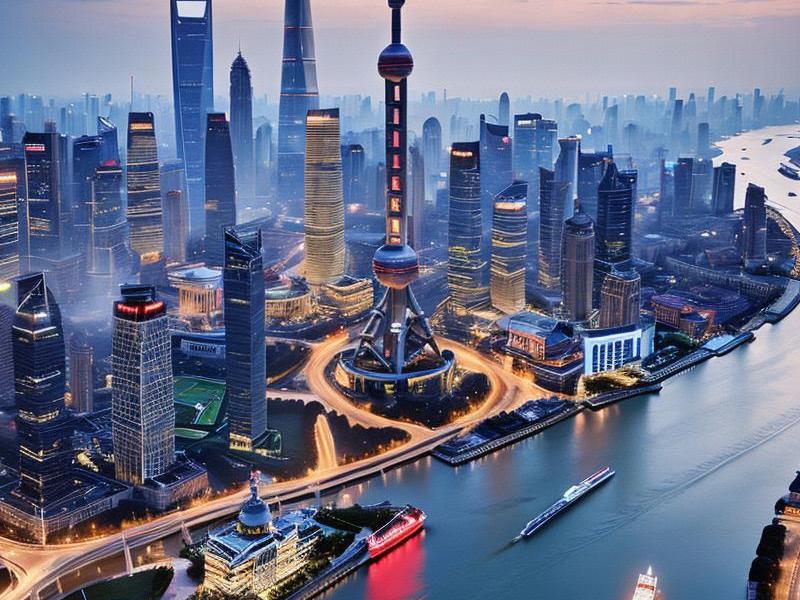This article delves into the dynamic city of Shanghai and its surrounding regions, exploring their unique blend of urban development, cultural heritage, and economic growth. From the bustling streets of the Bund to the serene landscapes of the Yangtze River Delta, Shanghai and its surroundings offer a fascinating glimpse into China's modern transformation.

Shanghai, often referred to as the "Pearl of the Orient," stands as a beacon of China's economic and cultural prowess. Nestled along the eastern coast of China, this vibrant metropolis is not only the largest city in the country but also a global financial hub. However, Shanghai's allure extends far beyond its skyline, encompassing a rich tapestry of history, culture, and natural beauty that permeates its surrounding regions.
The Bund, a historic waterfront area in the heart of Shanghai, is a testament to the city's colonial past and its transformation into a modern metropolis. Stretching along the Huangpu River, the Bund showcases a stunning array of neoclassical architecture, once home to numerous banks and trading houses. Today, it serves as a popular tourist destination, offering breathtaking views of the Pudong skyline across the river. The juxtaposition of old and new, tradition and modernity, is a defining characteristic of Shanghai.
Pudong, the eastern district of Shanghai, is a symbol of the city's rapid economic growth and urban development. Once a rural area, Pudong has been transformed into a futuristic landscape featuring iconic landmarks such as the Oriental Pearl Tower, the Jin Mao Tower, and the Shanghai Tower, which is the tallest building in China. The Lujiazui Financial District, home to the Shanghai Stock Exchange, is a hub of global finance, attracting businesses and investors from around the world. Pudong's skyline, illuminated at night, is a visual representation of Shanghai's aspirations and achievements.
上海龙凤论坛爱宝贝419
Beyond the urban sprawl of Shanghai lies the Yangtze River Delta, a region that encompasses Shanghai and the surrounding provinces of Jiangsu and Zhejiang. This economically dynamic region is often referred to as the "factory of the world" due to its manufacturing prowess and export capabilities. Cities such as Suzhou, Hangzhou, and Nanjing are known for their rich cultural heritage, beautiful landscapes, and thriving economies. Suzhou, with its classical gardens and canals, is a UNESCO World Heritage site and a symbol of traditional Chinese culture. Hangzhou, the capital of Zhejiang province, is renowned for its West Lake, a picturesque destination that has inspired poets and artists for centuries.
The integration of Shanghai with its surrounding regions is a key aspect of the city's development strategy. The Shanghai Free-Trade Zone, established in 2013, aims to promote trade and investment by providing a more business-friendly environment. This initiative has attracted numerous multinational corporations and has contributed to the region's economic growth. The development of high-speed rail networks, such as the Shanghai-Nanjing and Shanghai-Hangzhou lines, has further enhanced connectivity within the Yangtze River Delta, facilitating the movement of people and goods.
上海贵族宝贝自荐419
Culturally, Shanghai and its surroundings offer a diverse and vibrant tapestry of traditions and influences. The city is known for its unique blend of Shanghainese cuisine, which features delicate flavors and intricate preparation techniques. Dishes such as xiaolongbao (soup dumplings) and shengjianbao (pan-fried dumplings) are beloved by locals and visitors alike. The city's art scene is equally vibrant, with galleries, theaters, and cultural festivals showcasing a wide range of artistic expressions. The Shanghai International Film Festival, one of the oldest and most prestigious film festivals in Asia, attracts filmmakers and audiences from around the world.
The natural beauty of Shanghai and its surroundings is another aspect that contributes to their appeal. The Shanghai Botanical Garden, located in the western part of the city, is a serene oasis that features a wide variety of plant species and beautiful landscapes. The Yangtze River, the longest river in China, offers opportunities for water activities and provides a vital transportation route for the region. The surrounding provinces are home to stunning natural landscapes, including mountains, lakes, and coastal areas, attracting nature enthusiasts and outdoor adventurers.
上海品茶网
However, the rapid development of Shanghai and its surroundings has also brought challenges, particularly in terms of environmental sustainability and urban planning. The city has taken significant steps to address these issues, investing in green technologies and sustainable urban development initiatives. The construction of the Shanghai Expo Park, which hosted the World Expo in 2010, is an example of the city's commitment to sustainability. The park features eco-friendly architecture, renewable energy sources, and green spaces, serving as a model for future urban development.
In conclusion, Shanghai and its surrounding regions offer a fascinating glimpse into China's modern transformation, blending urban development, cultural heritage, and economic growth. From the historic Bund to the futuristic skyline of Pudong, from the rich cultural traditions of Suzhou and Hangzhou to the natural beauty of the Yangtze River Delta, this dynamic region is a testament to China's aspirations and achievements. As Shanghai continues to evolve, its integration with the surrounding regions will play a crucial role in shaping the future of the Yangtze River Delta and China as a whole.
The story of Shanghai and its surroundings is one of resilience, innovation, and cultural richness. It is a story that reflects the broader narrative of China's rise as a global power, driven by a commitment to economic development, cultural preservation, and environmental sustainability. As we look to the future, the continued growth and transformation of Shanghai and its surroundings will undoubtedly have a profound impact on China and the world.